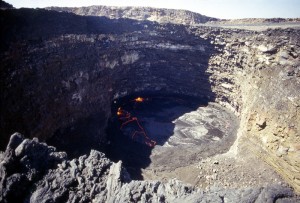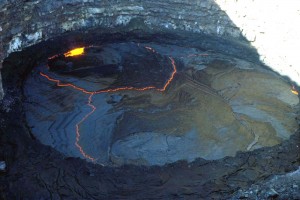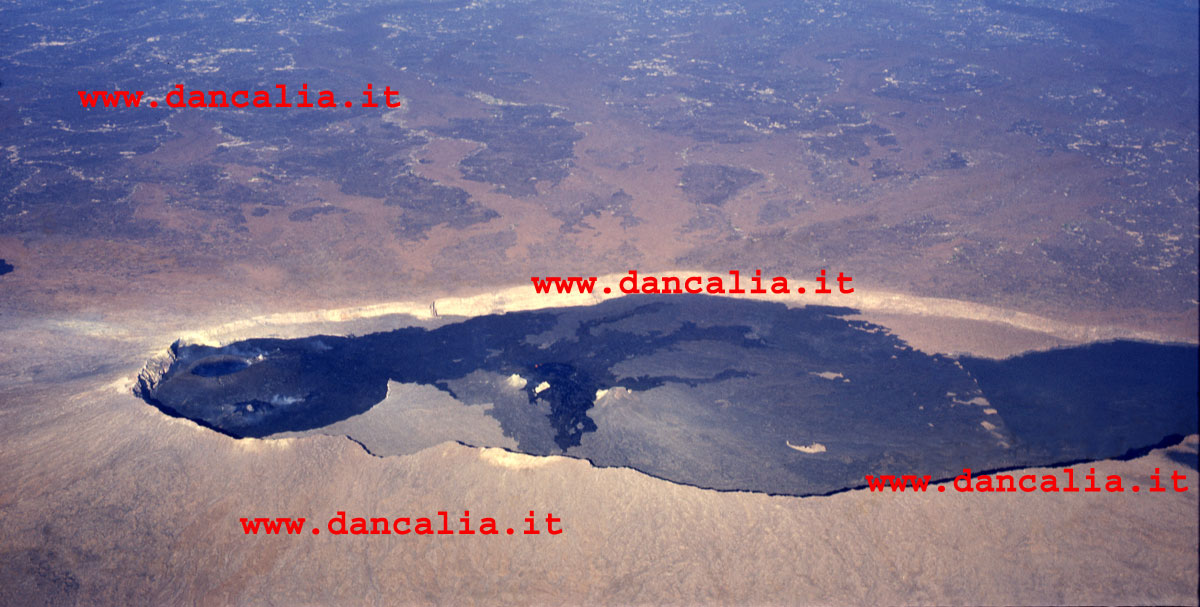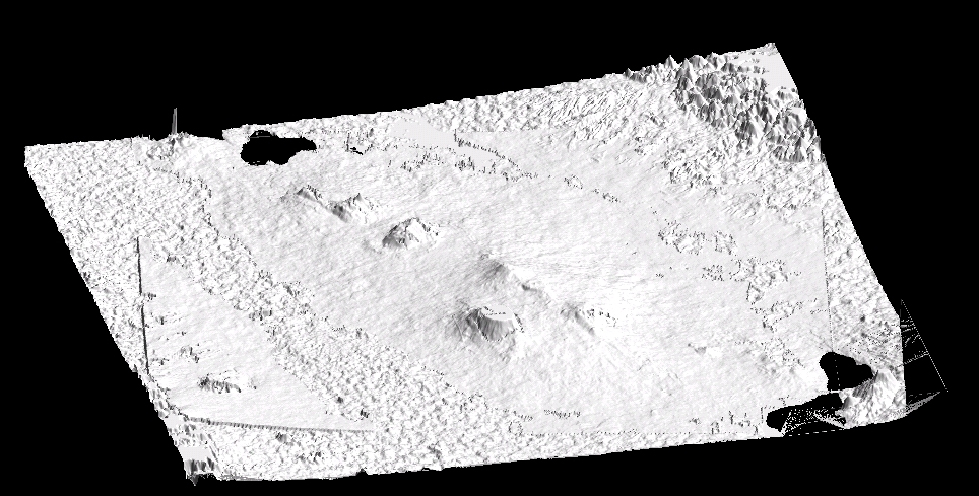Brevi conclusioni di carattere scientifico derivate dalle osservazioni vulcanologiche effettuate durante la spedizione sul vulcano Erta Ale
Dirette osservazioni durante la spedizione scientifica del novembre 1997, hanno permesso effettuare alcune misure: all’interno di questa caldera si riconoscevano due Pit craterici di forma circolare, il più grande (300 m di diametro) il Pit craterico nord con un’intensa attività fumarolica sulle pareti e sul fondo; il più piccolo (155 m di diametro con pareti verticali di circa 80 m), Pit craterico centrale, presentava ancora il lago di lava attivo, che fu scoperto nel 1967. Il lago di lava dell’Erta Ale (di forma ovale, occupava parzialmente il fondo del pit craterico e misurava 98 m lungo l’asse nord-sud e 80 m lungo est-ovest), rappresenta una finestra incredibilmente vicina da cui osservare il processo di risalita dei magmi dal mantello terrestre.
Report for GNV Bullettin
Only fumarolic activity was observed in the Northern pit crater located close to the Northern rim of the caldera. A small plume is visible from the plain of Dodom (Rorom), about 25 km West of the summit. The fumarolic vents are located at the Southern rim of the pit, the shape of which has not changed since last GVN report in 1995. A smaller pit crater is located xx m South of the previous one, and contains an active lava lake. During our two-days visit to the caldera we have taken a set of topographic measurements by using a Laser Rangefinder Binocular (Leica Vector 1500 DAES), and have collected samples of the recent lava lake overflows at the bottom of the crater pit. The present lava lake is located within the 172 (NS) x 155 (EW) pit crater, at a depth of 78 m from the lower point of the rim. The lake occupies the Western part o f the crater bottom, and is 98 m long in the NS direction and about 80 m in the EW direction. A continuous 5-10 m wide terrace about 5 m higher than the surface of the lava surrounds the lake. The terrace is made up of dark, fresh shally pahoehoe broken in slabs. Towards the East a 0.5-1 m high step separates the fresh lava flows from an older terrace floored by slabs of light gray shally pahoehoe, covered by abundant Pele’s hairs. The Eastern part of the crater bottom is occupied by a talus constituted
f the crater bottom, and is 98 m long in the NS direction and about 80 m in the EW direction. A continuous 5-10 m wide terrace about 5 m higher than the surface of the lava surrounds the lake. The terrace is made up of dark, fresh shally pahoehoe broken in slabs. Towards the East a 0.5-1 m high step separates the fresh lava flows from an older terrace floored by slabs of light gray shally pahoehoe, covered by abundant Pele’s hairs. The Eastern part of the crater bottom is occupied by a talus constituted  by lava blocks from the crater walls. The crater wall from the crater rim to the top of the talus is 55 m long. Up to five active lava fountains were observed at the same time on the lake surface. The largest fountains occurred near the center of the lake, but the most frequent fountains were located close to its SW margin. During the phases of maximum activity at the center of the lake large portions of the black cooled lava surface were observed to move toward the central lava fountain. Smoke emission was clearly observed from the fountains. With respect to the last observations in 1995 (GVN Bulletin n. xx) the condition of the Southern pit crater and its lava lake appears substantially unmodified. A comparison between our observations and the pictures taken during December 1995 (cita sito WEB) shows that the talus has slightly extended toward the North, and that the 5 m high terrace along the Western border of the lake is a new feature. The presence of the 5 m high terrace and the finding of sampling material on top of the older overflows, about 6 m above the present lake surface and presumably left by the French team visiting the lava lake in December 1995, constrain the possible upwards oscillations of the lava lake surface over the past two years at about 5 m.
by lava blocks from the crater walls. The crater wall from the crater rim to the top of the talus is 55 m long. Up to five active lava fountains were observed at the same time on the lake surface. The largest fountains occurred near the center of the lake, but the most frequent fountains were located close to its SW margin. During the phases of maximum activity at the center of the lake large portions of the black cooled lava surface were observed to move toward the central lava fountain. Smoke emission was clearly observed from the fountains. With respect to the last observations in 1995 (GVN Bulletin n. xx) the condition of the Southern pit crater and its lava lake appears substantially unmodified. A comparison between our observations and the pictures taken during December 1995 (cita sito WEB) shows that the talus has slightly extended toward the North, and that the 5 m high terrace along the Western border of the lake is a new feature. The presence of the 5 m high terrace and the finding of sampling material on top of the older overflows, about 6 m above the present lake surface and presumably left by the French team visiting the lava lake in December 1995, constrain the possible upwards oscillations of the lava lake surface over the past two years at about 5 m.












